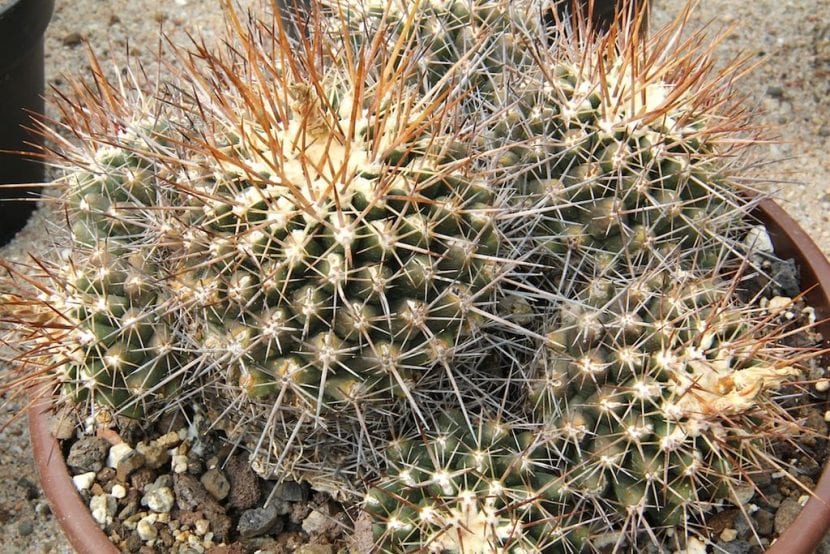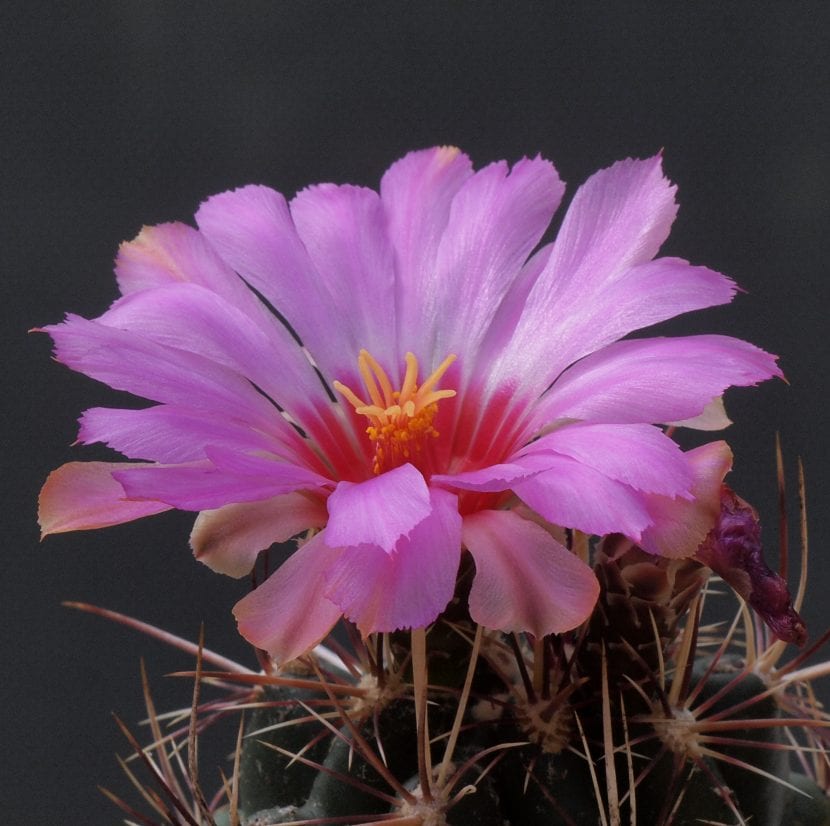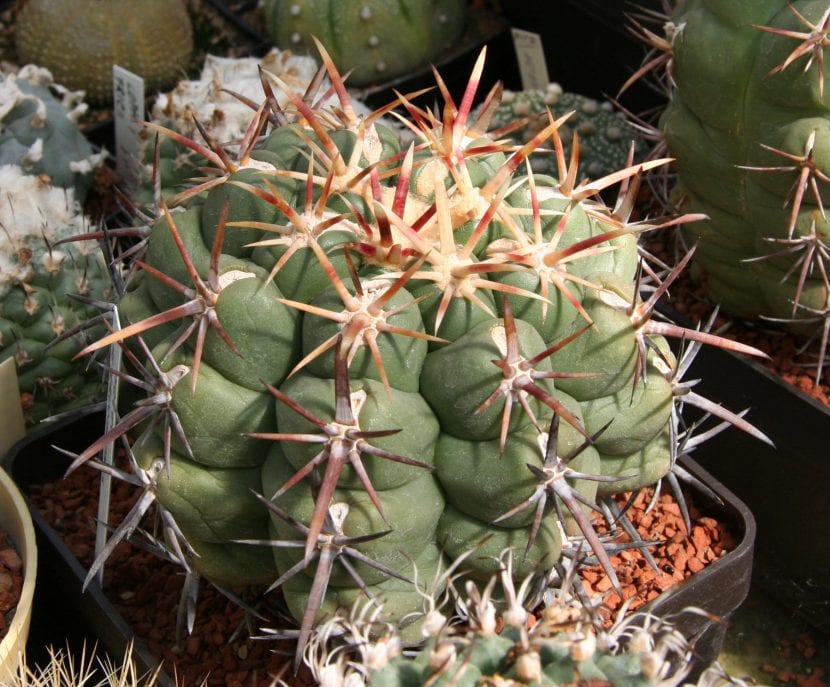
Thelocactus tulensis
The Thelocactus They are collectible succulents that are so hard to see in nurseries that when you finally make it, it's easy to want to take them home to decorate your patio. They are so beautiful, so rare, and produce such beautiful flowers that having even one specimen is a source of pride and satisfaction.
So, if you want to know everything about these plants, then I will explain to you what are their characteristics and what care do you have to provide them so that they stay in perfect health.
Characteristics of the Thelocactus

Thelocactus bicolor v. little tanks
Our protagonists are cacti native to northern Mexico and Rio Grande (Texas). They are characterized by having a globular, short and cylindrical shape up to 25cm high. Most of the species are solitary, but there are others that are grouped in clusters. Its ribs, which appear in number of up to 20, are very marked.
The dorsal spines, that is, those that grow from the center that have a greater length, arise from the areolas. They can have up to 20 radial spines (the shortest). Normally, the color of this powerful weaponry is white or gray, but it can be yellow or brown. Flowers sprout during spring and are up to 7cm in diameter.
What care do you need?

Thelocactus heterochromus
If you would like to have one or more copies, here is your care guide:
- Location: outside, in full sun.
- Substrate or soil: it is very important that it has good drainage. If it is going to be in a pot I recommend using akadama or pumice; On the other hand, if you want to put it on the ground and the earth you have easily puddles, make a large hole, insert a block (of these squares that are used to build walls) and fill it with universal growing substrate mixed with perlite for later plant the cactus.
- Irrigation: two or three times a week in summer and weekly the rest of the year.
- Subscriber: during spring and summer it is advisable to add a tablespoon of Nitrofoska every 15 days.
- Multiplication: by seeds or cuttings in spring-summer.
- Planting or transplanting time: in spring.
- Rusticity: withstands the cold down to -2ºC, but needs protection against hail.
Enjoy your plant 🙂.